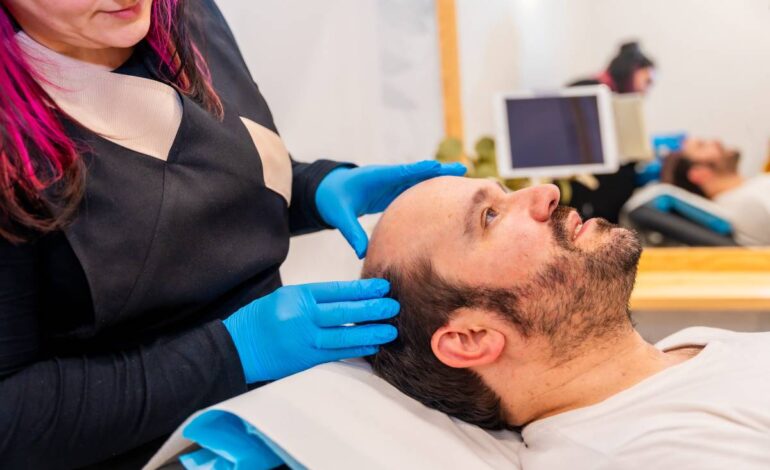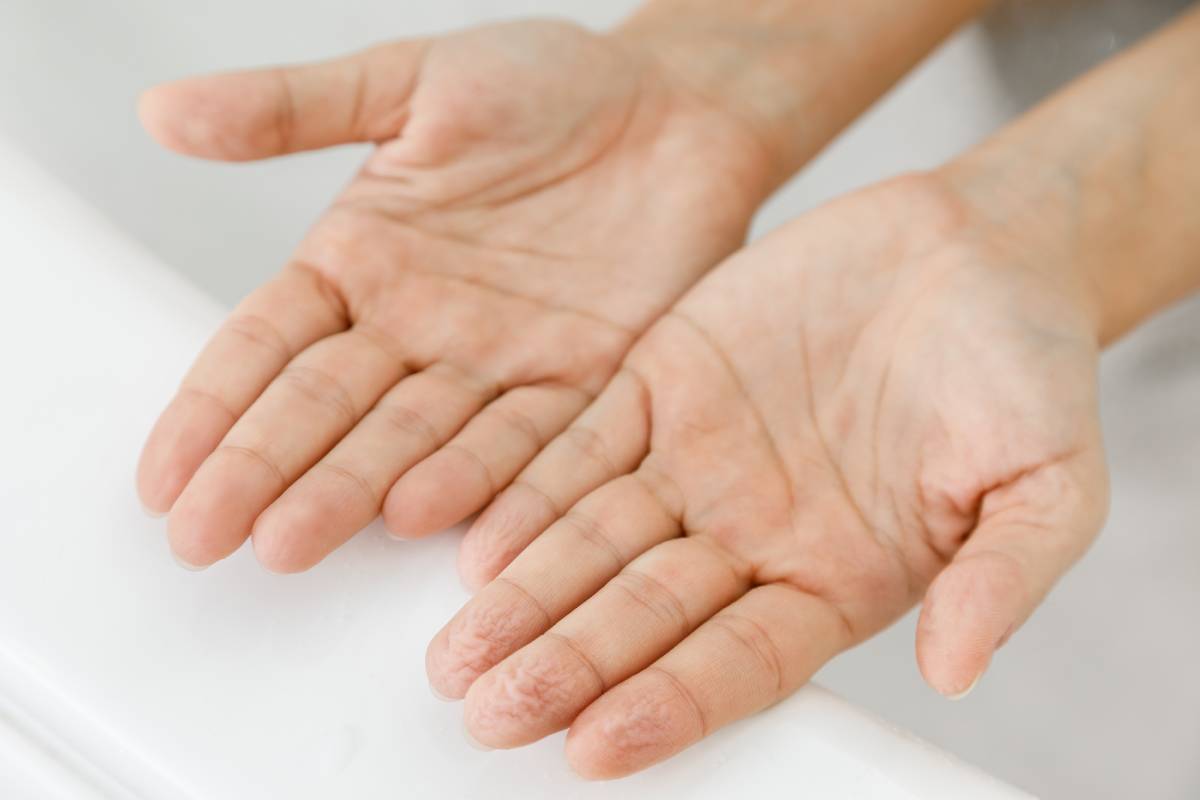
What’s the Treatment for Hair Loss? How Can You Recover from Hair Loss?
Hair loss can be a distressing experience for both men and women. It not only affects one’s appearance but can also take a toll on confidence and self-esteem. Fortunately, hair loss is not always permanent—and with modern medical advancements, there are effective treatments that can help you slow down, stop, or even reverse hair thinning and balding.
In this detailed guide, we’ll explore what causes hair loss, the latest treatment options available, and how you can start your journey toward recovery and hair regrowth.
Understanding Hair Loss: Causes and Types
Before jumping into treatment options, it’s important to understand why hair loss happens. Hair loss can result from several factors, and identifying the root cause is the first step toward finding the right solution.
1. Genetic Hair Loss (Androgenetic Alopecia)
This is the most common form of hair loss, often referred to as male pattern baldness or female pattern hair loss. It’s hereditary and typically linked to sensitivity to dihydrotestosterone (DHT), a byproduct of testosterone that shrinks hair follicles over time.
2. Hormonal Imbalances
Hormones play a major role in hair health. Conditions such as thyroid disorders, pregnancy, menopause, or polycystic ovarian syndrome (PCOS) can cause excessive hair shedding.
3. Nutritional Deficiencies
A lack of essential nutrients like iron, zinc, vitamin D, and biotin can weaken hair follicles and slow down hair growth.
4. Stress and Lifestyle Factors
Chronic stress, poor diet, smoking, and lack of sleep can disrupt the hair growth cycle, leading to telogen effluvium, a condition where hair sheds excessively.
5. Medical Conditions and Medications
Autoimmune diseases like alopecia areata, as well as certain medications such as chemotherapy drugs, antidepressants, or blood pressure medicines, can trigger temporary or permanent hair loss.
6. Scalp Health
Conditions such as dandruff, fungal infections, or seborrheic dermatitis can damage the scalp environment and interfere with healthy hair growth.
Available Treatments for Hair Loss
There is no one-size-fits-all solution for hair loss, as treatment depends on the underlying cause, the severity of the condition, and individual goals. However, today’s medical and cosmetic advancements offer a wide range of options—from non-invasive to surgical procedures.
1. Medications (Pharmaceutical Treatments)
Two FDA-approved medications are widely used to treat pattern hair loss:
Minoxidil (Rogaine)
- Available as a topical solution or foam.
- Stimulates blood flow to hair follicles, prolongs the growth phase, and increases hair density.
- Suitable for both men and women.
- Must be used consistently, as stopping treatment may cause hair to shed again.
Finasteride (Propecia)
- A prescription oral medication for men.
- Works by inhibiting the enzyme 5-alpha reductase, which converts testosterone into DHT.
- Reduces hair follicle miniaturisation and prevents further hair loss.
- May take 3 to 6 months to show visible results.
Combination Therapy: Many specialists recommend using Minoxidil and Finasteride together for enhanced results, especially in early to moderate hair loss cases.
2. Platelet-Rich Plasma (PRP) Therapy
PRP therapy is one of the most promising non-surgical treatments for hair restoration. It involves:
- Drawing a small sample of your blood.
- Spinning it in a centrifuge to concentrate platelets rich in growth factors.
- Injecting the PRP solution directly into areas of thinning hair.
These growth factors stimulate dormant follicles, improve blood supply, and promote natural hair regrowth.
- Typically performed in a series of 3–6 sessions spaced one month apart.
- Minimal downtime and natural-looking results.
PRP is particularly effective for those in the early stages of hair thinning or after a hair transplant to enhance graft survival.
3. Low-Level Laser Therapy (LLLT)
Also known as cold laser or red light therapy, this treatment uses safe, low-level lasers to stimulate cellular activity in the scalp.
- Increases blood flow to follicles.
- Prolongs the growth phase of hair.
- Can be done at clinics or with at-home laser caps or combs.
LLLT is most effective when combined with other treatments like Minoxidil or PRP.
4. Microneedling for Hair Regrowth
Microneedling involves using a device with fine needles to create micro-injuries on the scalp.
- These microchannels trigger collagen production and release growth factors.
- When combined with PRP or topical Minoxidil, absorption and effectiveness improve dramatically.
This method enhances scalp health and rejuvenates dormant follicles.
5. Hair Transplant Surgery
For advanced hair loss where follicles have permanently stopped producing hair, surgical intervention may be the most effective solution.
There are two main methods:
Follicular Unit Transplantation (FUT)
- A strip of scalp is removed from the back of the head (donor area).
- Hair follicles are dissected and implanted into thinning or bald areas.
- Leaves a linear scar, but it’s usually hidden under existing hair.
Follicular Unit Extraction (FUE)
- Individual follicular units are extracted one by one using a micro-punch.
- Less invasive, minimal scarring, and faster recovery.
- Produces natural-looking results when performed by an experienced surgeon.
Modern techniques like Direct Hair Implantation (DHI) and Robotic Hair Transplantation further improve precision, density, and overall outcome.
6. Scalp Micropigmentation (SMP)
SMP is a non-surgical cosmetic solution where microdots of pigment are tattooed onto the scalp.
- Creates the illusion of hair density or a close-shaved head.
- Perfect for those with thinning hair or receding hairlines.
- Does not promote new hair growth but significantly improves appearance and confidence.
7. Nutritional and Lifestyle Support
Hair health is deeply connected to nutrition and overall well-being. Supporting your body with the right nutrients can complement medical treatments.
Key nutrients for hair growth include:
- Biotin and Zinc: Strengthen hair and reduce shedding.
- Iron: Prevents anemia-related hair thinning.
- Vitamin D: Promotes follicle cycling and regeneration.
- Omega-3 fatty acids: Improve scalp hydration and follicle health.
Lifestyle recommendations:
- Eat a balanced diet rich in protein, fruits, and leafy greens.
- Manage stress through meditation, exercise, or adequate rest.
- Avoid harsh hair treatments and excessive heat styling.
- Massage your scalp regularly to improve blood circulation.
Emerging and Advanced Therapies
As technology evolves, so do hair restoration techniques. A few advanced methods gaining popularity include:
1. Stem Cell Hair Therapy
Stem cell therapy harnesses the body’s regenerative power by using stem cells to stimulate new follicle growth. Although still in the research phase, early results show significant promise.
2. Exosome Therapy
Exosomes—tiny extracellular vesicles—carry growth signals and regenerative molecules. When injected into the scalp, they enhance follicle recovery and improve density.
3. Growth Factor Concentrate (GFC) Therapy
A refined version of PRP, GFC therapy isolates high concentrations of growth factors without plasma components, making it a potent treatment for hair regrowth.
How to Recover from Hair Loss: Step-by-Step
Recovering from hair loss takes patience, consistency, and professional guidance. Here’s a general roadmap:
- Identify the Cause – Consult a hair specialist or trichologist for a thorough scalp assessment and diagnostic tests (hormonal profile, vitamin levels, etc.).
- Start Early Treatment – The sooner you act, the better the chances of saving existing follicles.
- Adopt a Combined Approach – Use medications, PRP, and nutritional support together for optimal results.
- Be Consistent – Hair growth cycles take time; most treatments need 3–6 months before noticeable improvements.
- Maintain Scalp Health – Keep your scalp clean, avoid buildup, and stay hydrated.
- Follow-Up Care – Regularly review progress with your doctor and adjust treatment plans as needed.
When to See a Hair Specialist
You should seek professional advice if:
- You notice sudden or patchy hair loss.
- Hair thinning worsens despite over-the-counter products.
- You experience scalp itching, pain, or inflammation.
- You’re considering advanced options like PRP or transplantation.
An experienced clinician can create a tailored treatment plan based on your individual needs and hair loss pattern.
The Emotional Side of Hair Loss
Beyond the physical changes, hair loss can deeply impact mental and emotional well-being. Many people report feelings of anxiety, embarrassment, or low confidence. Remember that it’s okay to seek support—not just medical but emotional as well.
Connecting with a qualified specialist can restore not only your hair but also your confidence and quality of life.
Final Thoughts
Hair loss is a complex condition, but it’s not something you have to live with permanently. With today’s advanced treatments—from medications and PRP therapy to surgical hair transplants and lifestyle changes—there are effective ways to slow, stop, and even reverse hair thinning.
The key is to act early, stay consistent, and seek professional care from experienced hair restoration experts.
If you’re ready to take the next step toward restoring your confidence and achieving natural-looking results, consider consulting Menscape Clinic. Their team of professionals offers personalised treatment plans and the latest techniques in hair restoration to help you recover from hair loss safely and effectively.





